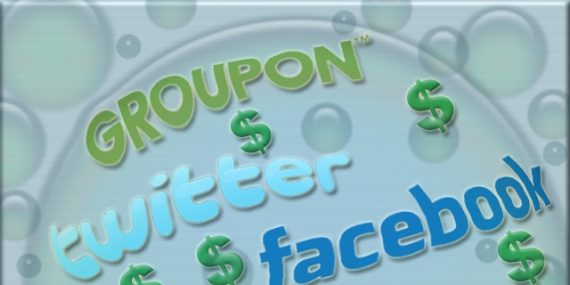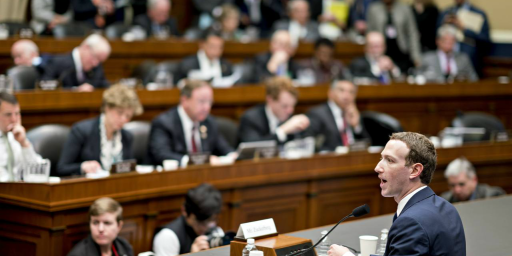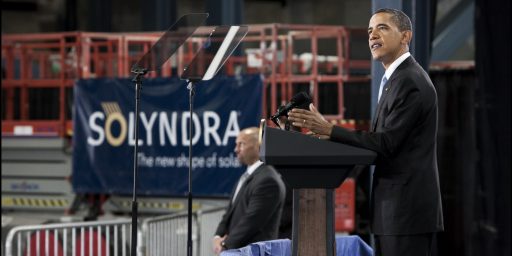Is The Tech Bubble Returning?
Some signs from Silicon Valley seem to indicate that the heady days of the 90s Tech Bubble are returning.
The mid to late 1990s were quite a good economic time in the United States. Economic growth was strong, the stock market was booming, housing prices were increasing at rates that made buying a home seem more like playing the stock market than finding a place that your family would live in for decades going forward, and, out West, companies associated with the technology boom associated with the growth of the Internet and the World Wide Web had seemingly found a way to make money without actually making money. Thanks in no small part to Venture Capitalists who were willing to invest millions in companies that were years away from producing anything that would generate revenue and a stock market eager to invest in the next big thing, companies that seemed to excel at little more than losing money were attracting money from all over the country. Many of these companies ended up being traded on the NASDAQ exchange, and helped to drive that exchanges composite index higher and higher notwithstanding incredibly high price-to-earnings ratios. At its peak, the the NASDAQ had reached an all-time high of 5132 and closed at 5048 in May of 2000. From that point forward, though, it was all downhill. The dot-com bubble had burst, and it started to draft the market down with it. In the end, the popping of that bubble was one of the contributing factors to the recession that the United States was in from March to November of 2001. The NASDAQ index still has not reached the heights it once touched during the glory days of the tech bubble of the late 90s, and the whole experience ended up being eerily predictive of what would happen with real estate and mortgage derivatives only a few years later.
The technology industry has changed significantly since then, of course. Companies like Google and Amazon that were part of the Silicon Bubble back in the 90s are now thriving companies with a solid record of producing revenues. Apple has had an amazing decade long run thanks to a culture of innovation that Steve Jobs helped reintroduce, and even a relative newcomer like Facebook has surprised everyone by generating revenue beyond expectations ever since going public. At the same time, though, some are starting to notice that some aspects of the culture of the bubble economy times, now some fifteen years or more in the past, are returning to Silicon Valley:
PALO ALTO, Calif. — These are fabulous times in Silicon Valley.
Mere youths, who in another era would just be graduating from college or perhaps wondering what to make of their lives, are turning down deals that would make them and their great-grandchildren wealthy beyond imagining. They are confident that even better deals await.
“Man, it feels more and more like 1999 every day,” tweeted Bill Gurley, one of the valley’s leading venture capitalists. “Risk is being discounted tremendously.”
That was in May, shortly after his firm, Benchmark, led a $13.5 million investment in Snapchat, the disappearing-photo site that has millions of adolescent users but no revenue.
Snapchat, all of two years old, just turned down a multibillion-dollar deal from Facebook and, perhaps, an even bigger deal from Google. On paper, that would mean a fortyfold return on Benchmark’s investment in less than a year.
Benchmark is the venture capital darling of the moment, a backer not only of Snapchat but the photo-sharing app Instagram (sold for $1 billion to Facebook), the ride-sharing service Uber (valued at $3.5 billion) and Twitter ($22 billion), among many others. Ten of its companies have gone public in the last two years, with another half-dozen on the way. Benchmark seems to have a golden touch.
That is generating a huge amount of attention and an undercurrent of concern. In Silicon Valley, it may not be 1999 yet, but that fateful year — a moment when no one thought there was any risk to the wildest idea — can be seen on the horizon, drifting closer.
No one here would really mind another 1999, of course. As a legendary Silicon Valley bumper sticker has it, “Please God, just one more bubble.” But booms are inevitably followed by busts.
“All business activity is driven by either fear or greed, and in Silicon Valley we’re in a cycle where greed may be on the rise,” said Josh Green, a venture capitalist who is chairman of the National Venture Capital Association.
For Benchmark, that means walking a narrow line between hyping the future — second nature to everyone in Silicon Valley — and overhyping it.
Opinions differ here about exactly what stage of exuberance the valley is in. “Everyone feels like the valley has been in a boom cycle for quite some time,” said Jeremy Stoppelman, the chief executive of Yelp. “That makes people nervous.”
John Backus, a founding partner with New Atlantic Ventures, says he believes it is more like 1996: Things are just ramping up.
The numbers back him up. In 2000, just as the dot-com party was ending, a record number of venture capitalists invested a record amount of money in a record number of deals. Entrepreneurs received over $100 billion, a tenfold rise in dollars deployed in just four years.
Much of the money disappeared. So, eventually, did many of the entrepreneurs and most of the venture capitalists.
Recovery was fitful. Even with the stock market soaring since the recession, venture money invested fell in 2012 from 2011, and then fell again in the first half of this year. Predictions of the death of venture capital have been plentiful.
For one thing, it takes a lot less money to start a company now than it did in 1999. When apps like Instagram and Snapchat catch on, they do so in a matter of months. V.C.’s are no longer quite as essential, and they know it. Just last week, Tim Draper, a third-generation venture capitalist with Draper Fisher Jurvetson, said he was skipping the next fund to devote his time to his academy for young entrepreneurs.
But there are signs of life. Funding in the third quarter suddenly popped, up 17 percent from 2012. “I think this is the best time we’ve seen since 1999 to be a venture capitalist,” Mr. Backus said. He expects the returns on venture capital, which have been miserable since the bust, to greatly improve this year.
“Everyone talks about the mega win — who was in Facebook, Twitter, Pinterest,” he said. “But the bread and butter of venture firms is not those multibillion exits but the $200 million deals, and there are a lot of those.” As an example he pointed to GlobalLogic, which operates design and engineering centers. It was acquired in October in a deal that returned $75 million on New Atlantic’s $5 million investment.
Better returns would influence pension firms and other big investors to give more money to the V.C.’s, which would in term increase the number of deals.
“I would be really scared if all of sudden the industry raised $100 billion,” Mr. Backus said. “But I don’t know how you can stop that. The greed factor kicks in. Everyone wants a piece of action.”
Some observers are also pointing to other recent news out of the technology sector. In mid-November, we learned that Snapchat, a service that allows users to exchange pictures and short messages that are automatically deleted after a set period of time, turned down a multi-billion buyout offer from Facebook because their owners believe that the company is worth more even though it has yet to actually generate any revenue. Earlier in the month Twitter’s IPO was judged a huge success when its share price jumped some 93% above the offering price on the first day of trading despite the fact that there was plenty in the SEC filings that accompanied its IPO to lead one to wonder just how the company could come close to even the still modest success that Facebook has had in integrating ads into its service. A month later, Twitter’s share price remains fairly high compared to its IPO price even though those doubts about the company’s ability generate revenue remain as powerful as they were from the day the IPO was announced. Indeed, Twitter’s share price isn’t that far away from Facebook’s, even though Facebook has a much, much larger user base and far healthier revenues. Those are just the two most prominent examples of what seems to be a repetition of the cycle that developed in the 90s when big money was being thrown about Silicon Valley under what even back then seemed like dubious reasoning.
None of this is to suggest, of course, that the technology sector is headed for the same kind of spectacular rise and fall we saw in the late 90s. For one thing, there are no doubt some people who still remember what happened back then and are likely to be more cautious about who they give money to. For another, the technology is a far more prevalent part of every day life today than it was in the late 90s, which suggests that investing in the “next big thing” is likely to have more of a chance of success than it did in an era when smartphones didn’t exist, home computers were still a relatively new phenomenon on the consumer level, and the idea of near universal always-on high speed Internet access was still pretty much a pipe dream. We may be a point now where the technology infrastructure exists that justifies some of the more “out there” ideas coming out of Silicon Valley. After all, who would have thought that people would be standing in line all night outside an Apple Store to buy a phone?
Even taking all of that into account, though, economic bubbles are still a real thing and there’s no reason why Silicon Valley could not see another one pop a few years down the line.







The problem is the Ponzi Scheme we know as Wall Street. Over 95% of the trades are done by machines. The only interest is making money in the next 20 seconds with no thought given to the future. I just received a rather large inheritance and guess what, it’s sitting in CDs not a penny in the market. When the last tech bubble burst I was in a position where I could see it coming and managed to get out of the market without losing any money. As a customer engineer I had access to my customer’s inventory levels and saw those rising rapidly.
This Wall Street problem could be solved with a tax on Stock trading transactions. It doesn’t have to be a lot but the bureaucracy itself would discourage short term thinking.
It might be a bubble, what matters is the balance sheet fundamentals – whether the P/E ratios and value of these firms is as inflated as it was in 1999. I work in the Financial District of San Francisco and a few weeks ago at Starbucks, I overheard 2 guys (young late 20s-early 30s in jeans and company logo’d jerseys) discussing their stock options at a well-known tech communications firm located near my office. Each guy was talking about exercising about $20M in options. It does feel like 1998 again.
Also, here in the Bay Area the tech boom, particularly in social media and other digital communications, has pushed both commercial and residential real estate prices up at a very rapid rate. It’s leveled off recently at a very high plateau. The recent Twitter IPO instantly created over 1,500 multi-millionaires and many of these people have decided to pay cash for properties in San Francisco and in Marin and down the peninsula to Stanford and Silicon Valley. It wasn’t cheap to begin with ….
The tech sector is largely responsible the employment surge from San Francisco down to the Silicon Valley. The unemployment rate on the west side of the San Francisco Bay is now down to 6%. We’ll see.
If we’re gonna keep slashing the private sector then we better hope the private sector continues to run wild.
It amuses that Doug is all for public sector cuts…and is also shaking in his boots over a tech bubble.
I mean… What’s gonna make you happy??? A full on depression???
I don’t think there is any true, broad, “buy anything” bubble going on. A narrow set of too high valuations are different, and less economically dangerous.
The broad market may be overvalued in some sense, but that is also different.
@C. Clavin:
I’m not saying that Doug is a part of this group, however there are still many conservatives who believe that we should have taken the austerity medicine aback in 2009, and that if it took a protracted period of high unemployment and even deflation, well that was the price we should pay to get our economic house in order. Of course, as events subsequent to the 2008 crash, 2009 unemployment free-fall have demonstrated, austerity was and is exactly the wrong course to take. We’ve had low inflation and slow steady growth since 2009 – not terribly exciting, but far better than the Medieval medicine that conservatives were pining for.
@al-Ameda:
Well…on a very basic level…if you are going to pursue austerity you pursue it when times are good…save for a rainy day…and then you spend that money as necessary to get through the rainy day. Which means we really should have instituted austerity around the turn of the century…late 90’s or early aughts. Instead Republicans spent money like a drunken coke-sniffing AWOL Texas Air National Guardsman.
What Republicans have done is turn basic economic logic upside down. Not surprising given their total rejection of reality and…you know…facts.
But look…this is just one piece of a failed economic theory Republicans, and to only a slightly lesser extent Democrats, have been chasing for 40 some-odd years. Somehow we need to change our course. We need to go from the Shareholder Economy we have been suffering through since Reagan…to the Stakeholder Economy that worked from the Depression until Reagan. I’m not sure how it happens…but it has to.
@C. Clavin:
Well, Keynes was an advocate of balanced budgets and saving when the times were good, and an advocate of stimulus spending in recessionary periods. Austerity programming when the economy is in free-fall and deflation is on, is quite simply as close to a death penalty as one could wish for.
@al-Ameda:
I think it’s just common sense…whether Keynes endorsed it or not.
I got a very healthy promotion 4 or 5 months ago…the extra money goes into savings and my 401K.
Everyone’s running around looking for the next Facebook, implemented using Bitcoins.
Can anyone smell tulip bulbs?